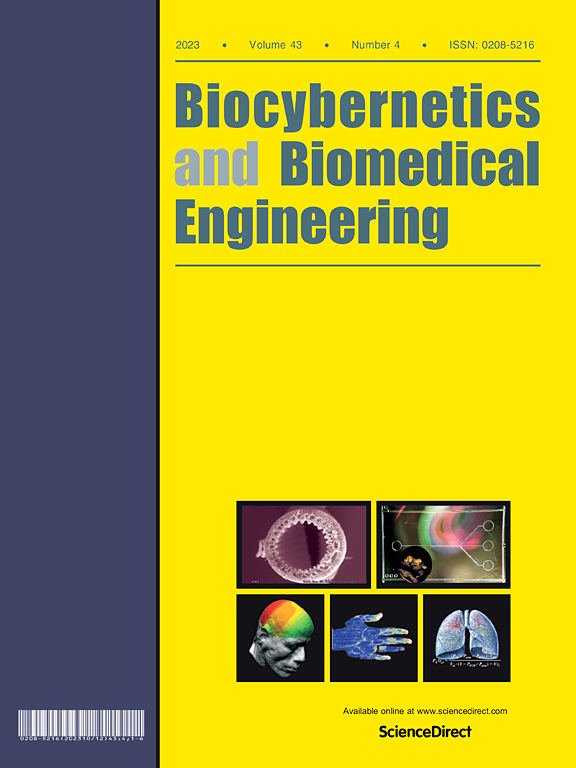Physically motivated projection of the electrocardiogram—A feasibility study
IF 6.6
2区 医学
Q1 ENGINEERING, BIOMEDICAL
引用次数: 0
Abstract
We present PhysECG: a physically motivated projection of the 12 lead electrocardiogram, supported by a deep learning model trained on 21,799 recordings from the PTB-XL database and discuss its feasibility. The method allows to evaluate the epicardial activity (inverse problem of ECG imaging) and, in particular, to distinguish left and right ventricular activity, with statistical spread related to localization of the septum. The observed dyssynchrony resembles other experimental results. The foundations of the method are based on the molecular theory of biopotentials. The heart’s activity in view of the method is decomposed into two processes: the passage of the electric activation wavefront and the response of cardiomyocytes. We introduce the idea of the electrode-resolved activity function, which represents the mass of the ventricle in Phase 0 of action potential within the lead field of each electrode. The computations are fast and robust, with excellent convergence. We present the quality metrics for the reconstruction based on the model on the testing set selected from the PTB database. In order to prove feasibility, we present and discuss two healthy controls: male and female, and two pathologies: right bundle branch block, and anterior myocardial infarction. The results obtained using PhysECG seem to be in accordance with the changes evoked by pathology, which has to be confirmed by subsequent clinical studies. The method is based on ECG, and does not require reconstruction of body geometry, which presents an affordable solution for low and middle-income countries where access to imaging is limited.
生理动机心电图投射——可行性研究
我们提出了PhysECG:一个基于PTB-XL数据库中21,799条记录训练的深度学习模型支持的12导联心电图的物理动机投影,并讨论了其可行性。该方法可以评估心外膜活动(心电图成像的反问题),特别是区分左心室和右心室活动,与室间隔定位相关的统计分布。观察到的不同步与其他实验结果相似。该方法的基础是基于生物电位的分子理论。该方法将心脏的活动分解为两个过程:电激活波前的通过和心肌细胞的反应。我们引入了电极分解活度函数的概念,它代表了每个电极引线场内动作电位第0相时心室的质量。计算速度快,鲁棒性好,收敛性好。我们提出了基于从PTB数据库中选择的测试集模型的重建质量度量。为了证明其可行性,我们提出并讨论了两种健康对照:男性和女性,以及两种病理:右束支阻滞和前路心肌梗死。使用physig获得的结果似乎与病理引起的变化一致,这需要后续的临床研究来证实。该方法基于ECG,不需要重建人体几何形状,这为获得成像机会有限的中低收入国家提供了一种负担得起的解决方案。
本文章由计算机程序翻译,如有差异,请以英文原文为准。
求助全文
约1分钟内获得全文
求助全文
来源期刊

Biocybernetics and Biomedical Engineering
ENGINEERING, BIOMEDICAL-
CiteScore
16.50
自引率
6.20%
发文量
77
审稿时长
38 days
期刊介绍:
Biocybernetics and Biomedical Engineering is a quarterly journal, founded in 1981, devoted to publishing the results of original, innovative and creative research investigations in the field of Biocybernetics and biomedical engineering, which bridges mathematical, physical, chemical and engineering methods and technology to analyse physiological processes in living organisms as well as to develop methods, devices and systems used in biology and medicine, mainly in medical diagnosis, monitoring systems and therapy. The Journal''s mission is to advance scientific discovery into new or improved standards of care, and promotion a wide-ranging exchange between science and its application to humans.
 求助内容:
求助内容: 应助结果提醒方式:
应助结果提醒方式:


